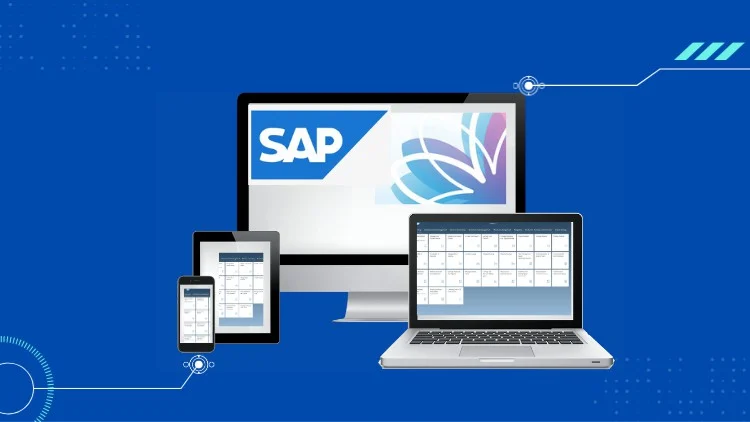

In the current digital era, user experience (UX) has become a vital factor influencing the success and usability of enterprise software. SAP Fiori addresses this shift by introducing a modern, intuitive approach to how users engage with SAP systems. Designed to cater to actual business roles and tasks, SAP Fiori offers applications that are user-friendly, role-specific, and accessible across different devices. This modern UX framework redefines how employees interact with enterprise software, significantly improving efficiency and satisfaction.
Understanding SAP Fiori
SAP Fiori is a UX design system created by SAP to deliver a seamless, intuitive, and consistent user experience across all SAP applications. Launched in 2013, Fiori was SAP’s response to feedback about the complexity and technical nature of traditional SAP interfaces. With the introduction of Fiori, SAP aimed to simplify the interaction between users and their software by applying a user-centered design approach.

Fiori is not just a user interface, but a complete UX strategy encompassing design principles, visual styles, development tools, and a growing library of applications. These applications follow standardized guidelines that ensure consistency, whether accessed on a desktop, tablet, or mobile device. Unlike the SAP GUI, which prioritized functional completeness often at the expense of usability, Fiori balances functionality with an intuitive, clean, and responsive design.
When focusing on Fiori’s role-based approach, each application is designed for a specific user role and focuses on the most relevant tasks and data. This minimizes clutter, enhances usability, and ensures that users see only the features they need to perform their responsibilities. Combined with a modern design built on web technologies like SAPUI5 and HTML5, Fiori enables users to complete tasks more efficiently, regardless of the device being used.
Key Features of SAP Fiori
 Built with responsiveness in mind, SAP Fiori apps automatically adapt their layout and behavior based on the device in use. This means a consistent and optimized user experience is maintained whether users are working from a desktop, tablet, or smartphone. This flexibility supports today’s mobile workforce and facilitates task completion on the go.
Built with responsiveness in mind, SAP Fiori apps automatically adapt their layout and behavior based on the device in use. This means a consistent and optimized user experience is maintained whether users are working from a desktop, tablet, or smartphone. This flexibility supports today’s mobile workforce and facilitates task completion on the go.Business Advantages of SAP Fiori
 The built in design of SAP Fiori applications encourages widespread adoption within an organization. Employees are more likely to embrace systems that are easy to learn and aligned with their work habits. Greater adoption leads to better use of existing SAP investments.
The built in design of SAP Fiori applications encourages widespread adoption within an organization. Employees are more likely to embrace systems that are easy to learn and aligned with their work habits. Greater adoption leads to better use of existing SAP investments.How SAP Joule Simplifies Fiori Application Development
SAP Fiori’s intuitive interface improves how users interact with enterprise systems, but building these applications can still be complex. SAP Joule, SAP’s AI-powered assistant, makes Fiori application development easier and faster by offering intelligent support throughout the process.
Joule is designed to integrate with SAP Business Technology Platform (BTP) and tools such as SAP Build. It helps both developers and business users streamline app creation—from planning and prototyping to deployment and optimization.
Here’s how SAP Joule enhances Fiori development:
 Joule uses AI to provide relevant code snippets and templates, helping developers build apps based on best practices and standard design patterns.
Joule uses AI to provide relevant code snippets and templates, helping developers build apps based on best practices and standard design patterns.SAP Joule acts as a co-pilot for Fiori development. It accelerates delivery, reduces complexity, and empowers even non-technical users to participate in creating powerful, user-friendly SAP applications.
Real-World Usage of SAP Fiori
SAP Fiori has practical applications in a wide range of business functions. In procurement, for example, Fiori simplifies the requisition and approval processes with intuitive forms and real-time tracking. In human resources, Fiori makes routine activities like leave requests, time tracking, and employee self-services much more user-friendly. The seamless integration with SAP S/4HANA further extends Fiori’s capabilities by enabling intelligent automation and advanced analytics.
Implementation Considerations and Best Practices
Organizations looking to implement SAP Fiori successfully should consider the following best practices:
Conclusion
SAP Fiori marks a transformative shift in how business users interact with enterprise software. With its focus on simplicity, role-specific design, and cross-device accessibility, Fiori enhances not only user experience but also operational efficiency. By reducing complexity, improving access to data, and supporting informed decision-making, SAP Fiori empowers organizations to unlock the full value of their SAP investments. As digital transformation continues to shape the business landscape, embracing SAP Fiori is a strategic step toward building more agile, user-friendly, and efficient enterprise environments.